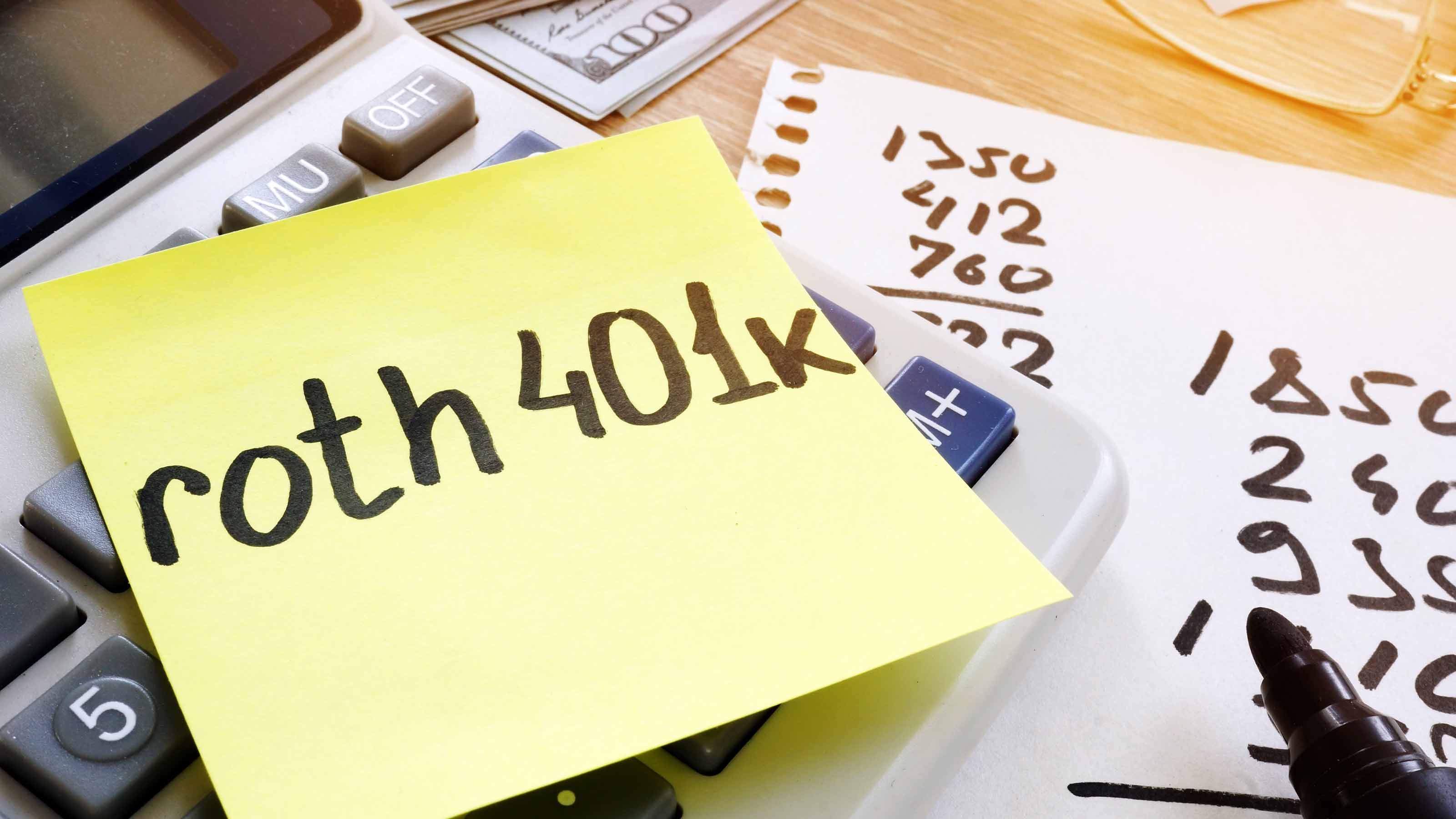SEP IRA Contribution Limits for 2022
A good option for small business owners, SEP IRAs allow individual annual contributions of as much as $61,000 a year

Self-employed workers and small-business owners who want an easy and inexpensive retirement plan should consider a Simplified Employee Pension IRA, or SEP IRA for short. SEP IRA plans are easier to establish than other retirement plans and have lower costs to administer.
2022 SEP IRA Contribution Limits
For 2022, a self-employed business owner effectively can salt away as much as $61,000 a year, but no more than 25% of their compensation. (That's up from the maximum of $58,000 in 2021 and $57,000 for 2020.) In comparison, a traditional IRA limits contributions to $6,000 for 2022 for those younger than 50, or $7,000 for those 50 or older thanks to a $1,000 "catch-up" contribution.
Like other individual retirement accounts, these contributions are tax deductible. But contribution rates are required to be uniform for all employees of a company that has a SEP IRA plan, including the owner. So while these plans offer small business owners an opportunity to save much more for their own retirement than they could with a traditional IRA, the catch is they have to contribute funds at the same rate to SEP IRA accounts for all their eligible employees. The rate may change from year to year, a flexibility designed to help companies that may have differences in cash flow. Also note: Contributions must be based only on the first $305,000 of an employee’s (or owner’s) compensation for 2022. This is up from $290,000 for 2021 and $285,000 for 2020.
From just $107.88 $24.99 for Kiplinger Personal Finance
Become a smarter, better informed investor. Subscribe from just $107.88 $24.99, plus get up to 4 Special Issues

Sign up for Kiplinger’s Free Newsletters
Profit and prosper with the best of expert advice on investing, taxes, retirement, personal finance and more - straight to your e-mail.
Profit and prosper with the best of expert advice - straight to your e-mail.
SEP IRAs are available for a variety of small-business types, including sole proprietorships, partnerships, limited liability companies, S corporations and C corporations. The plans can be an especially attractive option for a small business with few employees.
Unlike some other retirement plans, a SEP IRA is created primarily as a vehicle for employer contributions, and not payroll deductions. However, employers may also make contributions to their SEP IRA accounts, subject to the limit of traditional IRA contributions. And unlike 401(k) plans, the funds in a SEP IRA cannot be used as collateral for loans. As soon as a contribution is made to a SEP IRA, the money is considered 100% vested and owned by the employee.
To be eligible to participate in an employer's SEP IRA, the IRS says employees must be at least 21 years old, have worked at the business for three of the past five years and have earned at least $650 from the job in 2022. Employers may, however, set less restrictive eligibility rules. For example, they may enroll newly hired employees. But the rules must uniformly apply to all employees. Employers may exclude employees from their SEP IRA plan if the employees are part of a union agreement that includes retirement benefits. They also may bar nonresident alien employees who do not have U.S. wages, salaries or other personal services compensation from the employer.
SEP IRAs vs. Traditional IRAs
SEP IRAs follow many of the same rules as traditional IRAs. You generally must be at least 59 1/2 to take withdrawals from the account without paying a 10% penalty. Also, SEP IRA account owners may take distributions at any time. These distributions are subject to a 10% tax penalty if the account owner is under 59 1/2 years old and does not roll the funds over into another IRA or another employer’s retirement plan.
And once you turn age 72, you will have to start taking required minimum distributions (RMDs). You have until April 1 of the year after you turn 72 to take your first required minimum distribution, but after that you must take RMDs by December 31 of each year (even if you took your first RMD on April 1 of that same year).
Since employers make the contributions, not employees, catch-up contributions for retirement savers 50 and over are not permitted in SEP IRAs. However, employees have the responsibility of making investment decisions about their SEP IRA accounts.
A SEP IRA is easy to open and widely available at financial institutions that offer individual retirement accounts. This type of account is also a good option for a worker with a side gig out of his or her regular job. It would allow the worker to contribute fully to his or her employer's 401(k) and use the SEP IRA for self-employment income.
Congress Considers SEP Changes
Congress is considering legislation aimed at improving retirement savings in the U.S., including provisions that could expand SEP options. Among the changes included in the Enhancing American Retirement Now (EARN) Act, a bill that recently cleared a Senate committee, is a provision that would allow a Roth version of SEP IRAs, enabling employers to create accounts that contain after-tax contributions. Another provision would permit people with domestic employees, such as nannies, to provide them with retirement benefits under a SEP IRA.
Profit and prosper with the best of Kiplinger's advice on investing, taxes, retirement, personal finance and much more. Delivered daily. Enter your email in the box and click Sign Me Up.
Jackie Stewart is the senior retirement editor for Kiplinger.com and the senior editor for Kiplinger's Retirement Report.
-
 CD Maturing Soon? Here's What to Do Next
CD Maturing Soon? Here's What to Do NextThese strategies of what to do when you have a CD maturing soon will have you maximizing returns even with rate cuts.
-
 How to Make 2026 Your Best Year Yet for Retirement Savings
How to Make 2026 Your Best Year Yet for Retirement SavingsMake 2026 the year you stop coasting and start supercharging your retirement savings.
-
 You Saved for Retirement: 4 Pressing FAQs Now
You Saved for Retirement: 4 Pressing FAQs NowSaving for retirement is just one step. Now, you have to figure out how to spend and maintain funds. Here are four frequently asked questions at this stage.
-
 457 Plan Contribution Limits for 2026
457 Plan Contribution Limits for 2026Retirement plans There are higher 457 plan contribution limits in 2026. That's good news for state and local government employees.
-
 Medicare Basics: 12 Things You Need to Know
Medicare Basics: 12 Things You Need to KnowMedicare There's Medicare Part A, Part B, Part D, Medigap plans, Medicare Advantage plans and so on. We sort out the confusion about signing up for Medicare — and much more.
-
 The Seven Worst Assets to Leave Your Kids or Grandkids
The Seven Worst Assets to Leave Your Kids or Grandkidsinheritance Leaving these assets to your loved ones may be more trouble than it’s worth. Here's how to avoid adding to their grief after you're gone.
-
 SEP IRA Contribution Limits for 2026
SEP IRA Contribution Limits for 2026SEP IRA A good option for small business owners, SEP IRAs allow individual annual contributions of as much as $70,000 in 2025, and up to $72,000 in 2026.
-
 Roth IRA Contribution Limits for 2026
Roth IRA Contribution Limits for 2026Roth IRAs Roth IRAs allow you to save for retirement with after-tax dollars while you're working, and then withdraw those contributions and earnings tax-free when you retire. Here's a look at 2026 limits and income-based phaseouts.
-
 SIMPLE IRA Contribution Limits for 2026
SIMPLE IRA Contribution Limits for 2026simple IRA For 2026, the SIMPLE IRA contribution limit rises to $17,000, with a $4,000 catch-up for those 50 and over, totaling $21,000.
-
 457 Contribution Limits for 2024
457 Contribution Limits for 2024retirement plans State and local government workers can contribute more to their 457 plans in 2024 than in 2023.
-
 Roth 401(k) Contribution Limits for 2026
Roth 401(k) Contribution Limits for 2026retirement plans The Roth 401(k) contribution limit for 2026 has increased, and workers who are 50 and older can save even more.